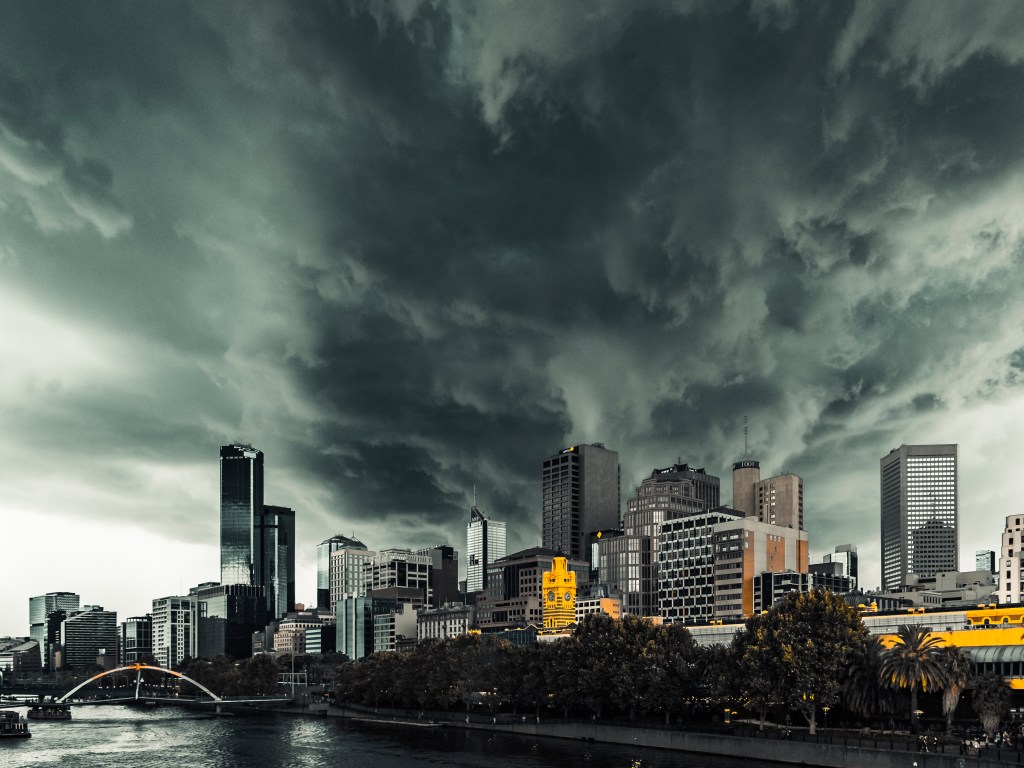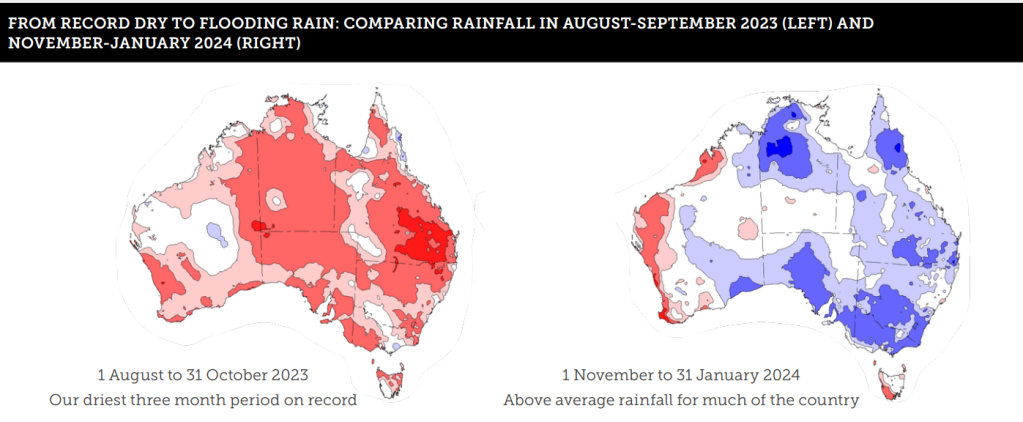More than 530,000 Victorian homes and businesses were without power on Tuesday, after the state suffered through a 37-degree day followed by a sudden, catastrophic storm.

The blackout in Victoria comes in the same week that the Climate Council released a report warning of extreme, unpredictable, whiplash weather.
Titled ‘Climate Whiplash: Wild Swings Between Weather Extremes,’ the report, which defines whiplash as ‘being hurtled violently from one extreme to another’, detailed an accurate summary of what Victoria would go through just days later.
“Such experiences are not confined to Queensland, Australia’s most disaster-prone state. Communities throughout our eastern states, including Victoria and New South Wales, have similarly experienced wild swings between scorching heat and fire risk to intense downpours and flash floods, and back again,” the report states.
It attributes the whiplash to climate change that makes weather ‘more chaotic and dangerous.’
“Communities have been caught off guard, emergency services strained, and conventional meteorological wisdom challenged. Almost every state and territory has broken an extreme weather record,” according to the report.
Other takeaways from the report are that historical weather conditions may no longer be accurate in predicting future weather patterns, as dramatic shifts are happening so rapidly. The Climate Council also notes that the flooding is in “short, intense downpours that catch communities off guard,” and cause flash flooding.
The report states that August, September and October 2023 was Australia’s driest three-month period on record. Just one month later, Victoria, New South Wales and Queensland had well above-average rainfall.

In 2019, the Climate Council put out a report quantifying the economic impact of climate change. It listed reduced agricultural yield, damage to property and infrastructure, commodity price hikes, and market corrections as likely outcomes.
The following were also listed in the Compound Costs: How Climate is Damaging the Australian Economy report:
- On current trends, the accumulated loss of wealth due to reduced agricultural productivity and labour productivity as a result of climate change is projected to exceed $19 billion by 2030, $211 billion by 2050 and $4 trillion by 2100.
- More than $226 billion in commercial, industrial, road, rail, and residential assets will be at risk from sea level rise alone by 2100, if greenhouse gas emissions continue at high levels.
- By 2050, climate change is projected to halve the irrigated agricultural output of the Murray-Darling Basin region, which currently accounts for 50% of Australia’s irrigated agricultural output by value (about $7.2 billion per year).
- By 2090, wheat yields on the 4,200 family farms in WA that produce half of Australia’s wheat are projected to fall by 41-49% if greenhouse gas emissions remain high.
Related
The energy market perspective
The Australian Energy Market Operator (AEMO) manages the electricity and gas market across Australia. AEMO issued a statement Wednesday morning stating that 285,500 homes were still without power. 12,400 of those are in the Melbourne CBD and surrounding areas. AEMO reported 473,000 homes and businesses were without power as of 8:30pm Tuesday night.
During the peak of the disruption, 530,000 homes suffered blackouts after storm activity, strong winds, and lightning damaged hundreds of power lines. Some homes may not have electricity restored for weeks, according to AEMO.
Wild 2023 weather reported by BOM
The Bureau of Meteorology also released a report this week chronicling the wild weather of 2023. The BOM official record of Australia’s climate and weather events states that:
- Both the mean annual maximum and minimum temperatures were above average for all states and the Northern Territory.
- Rainfall was above average in the north of Australia and below average in the east, south and west.
- Only Queensland and the Northern Territory had overall above-average rainfall – all the other states and territories had below-average rainfall in 2023.
- In the first quarter of 2023, Australia experienced multiple major flood events mostly across inland and northern regions.
- August to October 2023 was Australia’s driest three-month period since rainfall records began in 1900.
- Winter 2023 was Australia’s warmest on record, with the national mean temperature 1.53C above the 1961–1990 average.
- September 2023 was Australia’s driest September on record with total rainfall around 70% below the 1961–1990 average, and the second driest month since national rainfall records began in 1900, behind April 1902.
- August to October 2023 was Australia’s driest three-month period since rainfall records began in 1900.
- Sea surface temperatures for the Australian region were the seventh-highest on record since 1900 at 0.54°C above the 1961–1990 average.
- Globally, sea surface temperatures were the highest on record – and each of the past 10 years have been among the 10 warmest on record.
- Throughout 2023 net Antarctic sea-ice extent was either at record low levels or well below the 1991–2020 average – based on continuous satellite imagery since 1979.
- Climate change continues to influence Australia’s climate. Since national records began in 1910, Australia’s climate has warmed around 1.5°C.
Look back on the week that was with hand-picked articles from Australia and around the world. Sign up to the Forbes Australia newsletter here or become a member here.



